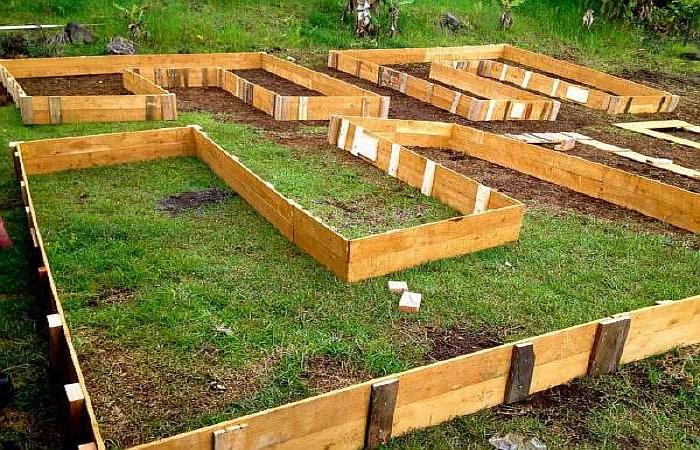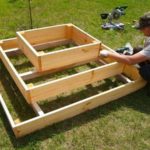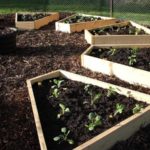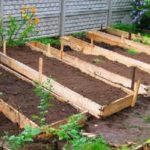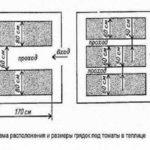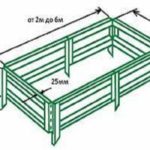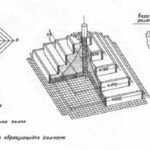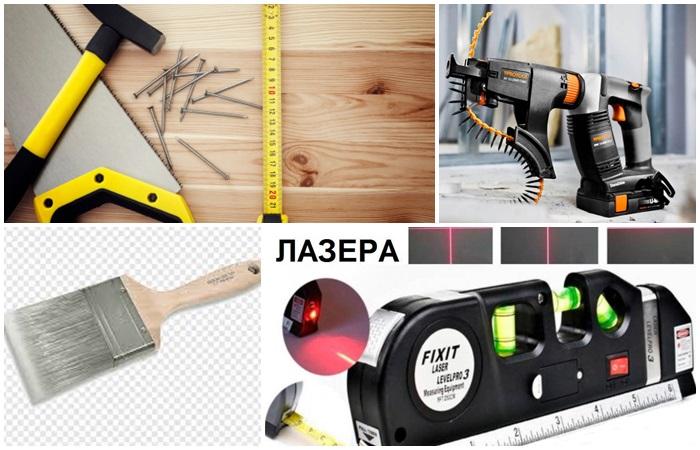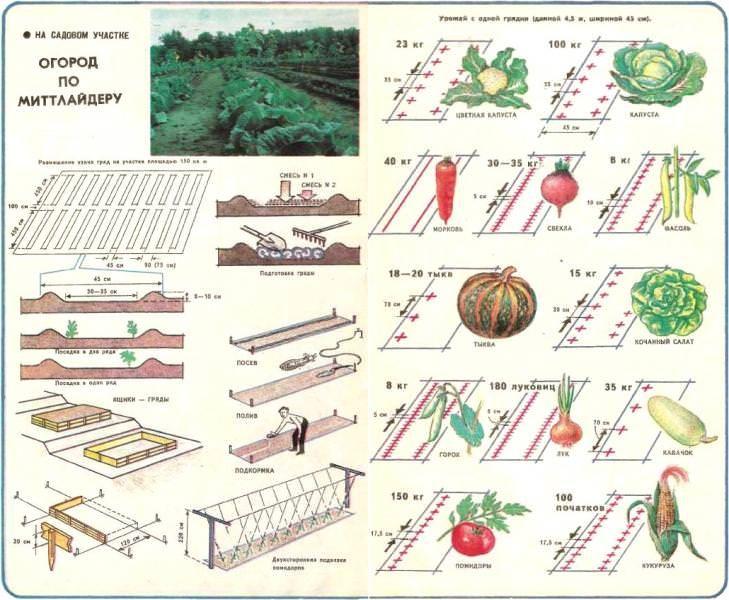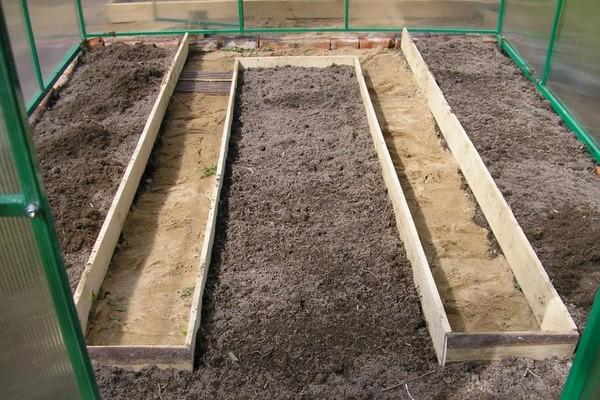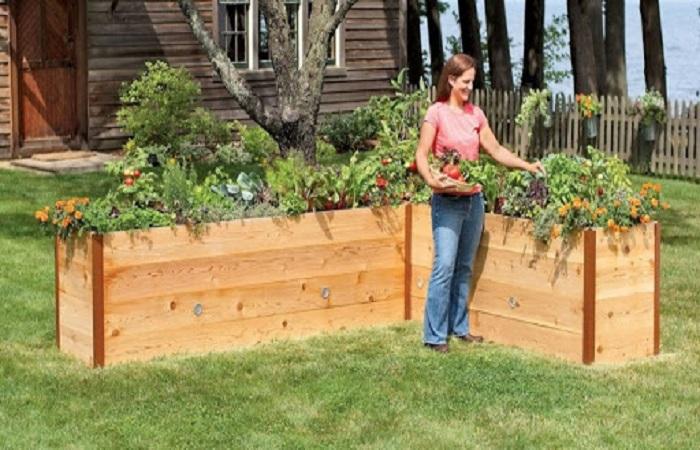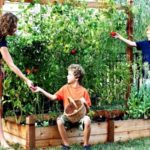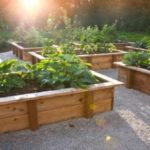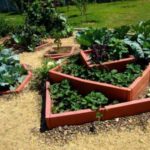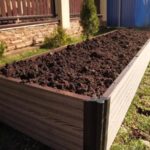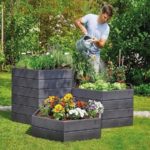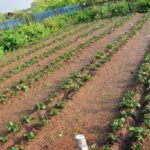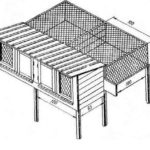In recent years, owners of summer cottages are increasingly giving preference to high beds, thanks to which it is possible to harvest a larger harvest than when growing crops in the usual way. To set up such a structure in the garden, different materials are used - from wood to plastic panels. Board beds have their advantages and disadvantages, but today they are the most accessible and inexpensive material used by gardeners.
Suitable boards
The main requirement for wood to create beds is resistance to moisture, so if the wrong material is used, the structure will quickly collapse. Preference is given to boards made of wood that are resistant to rotting processes, for example, oak, larch, ash and hard acacia. They have a dense structure, thanks to which they are not afraid of moisture. If a gardener plans to install beds for one or two seasons, then it is quite possible to use spruce or pine.
In addition to the type of wood, it is also important to pay attention to the size of the boards that you plan to use to build the box. Their thickness should be at least 15-20 cm, and the softer the wood, the thicker the boards used. This is necessary so that the material does not deform under soil pressure and exposure to moisture.
If there are unnecessary wooden pallets left on the farm, they are dismantled and used to create a structure; in this case, there is no need to spend money on purchasing material.
Pros and cons of such beds
Gardeners who use raised beds made from boards for growing crops for several seasons in a row have noted several advantages and disadvantages of this method.
The advantages include the following:
- Low cost of material. A structure made from unedged boards will cost less than one made from other materials.
- Easy to install. Even an inexperienced craftsman, if he follows the instructions, can easily cope with creating a box for growing crops.
- Environmental friendliness. Since the material is completely natural, it will not harm crops.
- Possibility of joint planting of vegetables in one place; Such combined beds allow you to save time and labor costs when caring for plants and make the most efficient use of the available territory.
- Stable shape. Thanks to the wood frame, the soil from the beds does not crumble and does not spread in different directions after watering.
- No weeds. If you cover the bottom of the bed with agrofibre, you won’t have to fight weeds, which will save the gardener’s time.
- Ease of plant care. Agrotechnical procedures such as loosening, fertilizing and watering take much less time.
Dimensions and drawings
Before you start creating a wooden box for your vegetable garden, you should decide on its size. First of all, they make a drawing on paper, where they indicate the location of the beds and the dimensions of the structure. The length of the bed can be any, it depends on the size of the garden plot and the availability of free space. Most often they make a box, the length of which varies from 2 to 3 meters. When determining the width, pay attention to ensure that the plants in the garden bed are easy to care for on both sides; the optimal size is from 1 to 1.8 meters. The height of the box is made from 30 to 40 cm.
If the length of the bed exceeds 3 meters, you will have to install additional supports for stability.
Required Tools
After the gardener has decided on the dimensions of the future structure, they move on to preparing the tools that will be needed during the construction of the box from the boards.
Required:
- hammer and hacksaw;
- tape measure and level;
- screwdriver, drill and set of screws for fastening;
- shovel and brush.
They also prepare the details of the future structure in advance - 2 long and 2 short boards, 6 pieces of wooden posts made of timber, which need to be sharpened on one side.
How to make beds from boards correctly
When creating beds from boards, follow step-by-step instructions. The process is slightly different for the construction of low and high structures.
Low
Such structures are most often installed in greenhouses to prevent the soil from spreading after watering. Low beds are also suitable for growing perennial crops, but only if the site has good fertile soil.
Scheme and dimensions
The height of a low bed varies from 15 to 20 cm, but it must be remembered that in this case it will not be possible to make a warm cushion for plants in it. When determining the length, they are guided by the free space on the site; as a rule, it does not exceed 3 meters for such a structure. The beds can be arranged either parallel to each other or in the form of rays.
Installation steps
When making and installing a wooden fence for a garden bed, follow the following step-by-step instructions:
- All wooden elements are coated with a water-repellent compound and left to dry for some time. Some gardeners limit themselves to covering the boards with lime; it contains fewer harmful components than impregnations.
- When the structural elements have dried, they begin to attach the support bars to the boards.This is done using self-tapping screws. If the length of the box exceeds 2 meters, then support posts are screwed to the long boards every meter so that the structure is stable.
- After this, the box is assembled by attaching a long board to the bars of two short ones. The second side is screwed in the same way, making sure that there are no gaps between the boards.
- When the structure is assembled, it is transported to the selected location and installed by driving the sharp ends of the support bars into the ground. It is necessary to check the horizontalness of the installed structure using a level.
Filling the bed
It will not be possible to create a warm cushion for the rapid growth of plants in a low bed due to the low height. A mesh is placed at the bottom and screwed to the boards; this will help prevent damage to the root system of plants by rodents. Agrofibre is spread over the mesh, and fertile soil is poured on top.
High
Original raised garden beds are used for growing root vegetables, potatoes, tomatoes and eggplants. Thanks to several layers of organic matter, it is possible not only to get a harvest faster, but also to increase its quantity. To create such a structure with your own hands, it is enough to prepare a standard set of tools and cut the boards into fragments of the required length. The assembly process follows the same instructions as for boxes for low beds.
Common mistakes
Beginning gardeners often make the same mistakes when creating beds from boards. This is, first of all, the choice of unsuitable material, which is destroyed after the first season of operation. It’s better to overpay for boards once than to build a new structure every year.

